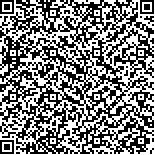附件
|
| 引用本文: | 段洪涛,张寿选,张渊智.太湖蓝藻水华遥感监测方法.湖泊科学,2008,20(2):145-152. DOI:10.18307/2008.0202 |
| DUAN Hongtao,ZHANG Shouxuan,ZHANG Yuanzhi.Cyanobacteria bloom monitoring with remote sensing in Lake Taihu. J. Lake Sci.2008,20(2):145-152. DOI:10.18307/2008.0202 |
|
| |
|
|
| 本文已被:浏览 12482次 下载 7105次 |

码上扫一扫! |
|
|
| 太湖蓝藻水华遥感监测方法 |
|
段洪涛1,2, 张寿选1,2, 张渊智1,2
|
1. 中国科学院南京地理与湖泊研究所湖泊与环境国家重点实验室, 南京 210008;2.
2. 香港中文大学太空与地球信息科学研究所, 香港 沙田
|
|
| 摘要: |
| 利用遥感技术监测太湖蓝藻水华具有重要的现实意义.基于不同遥感数据,包括MODIS/Terra、CBERS-2CCD、ETM和IRS-P6 LISS3,结合蓝藻水华光谱特征,采用单波段、波段差值、波段比值等方法,提取不同历史时期太湖蓝藻水华.结果表明:MODIS/Terra数据可以利用判别式Band 2>0.1和Band 2/Band 4>1提取蓝藻水华;CBERS-2 CCD、ETM和IRS-P6 LISS3数据可以利用Band4大于一定阈值和Band4/Band3>1提取蓝藻水华;波段比值(近红外/红光>1)算法稳定,可以发展成为蓝藻水华遥感提取普适模式.同时,本文成功利用ETM和IRS-P6 LISS3数据Band4波段对蓝藻水华空间分布强度进行了五级划分.这为今后利用遥感技术,建立太湖蓝藻水华监测和预警系统奠定了基础. |
| 关键词: 蓝藻 卫星监测 多源数据 太湖 |
| DOI:10.18307/2008.0202 |
| 分类号: |
| 基金项目:中国科学院“优秀博士学位论文、院长奖获得者科研启动专项资金”;国家科技支撑计划项目(2007BAC26B01);江苏省自然科学基金(BK2007261)联合资助 |
|
| Cyanobacteria bloom monitoring with remote sensing in Lake Taihu |
|
DUAN Hongtao1,2, ZHANG Shouxuan1,2, ZHANG Yuanzhi1,2
|
1. State Key Laboratory of Lake Science and Environment, Nanjing Institute of Geography and Limnology, CAS, Nanjing 210008,
P. R. China;2.
2. Institute of Space and Earth Information Science, The Chinese University of Hong Kong, Shatin, NT, Hong Kong, P. R. China
|
| Abstract: |
| It is significant that remote sensing methods is used for monitoring cyanobacteria bloom in Lake Taihu, since it breaks outfrequently each year. Based on spectral characters of cyanobacteria bloom, different algorithm including single band, bandsubtraction and band ratio, were used for bloom mapping, with different instruments such as the MODIS/Terra, CBERS-2 CCD, ETMand IRS-P6. They noted that all these sensors were able to detect cyanobacteria bloom, while the algorithm of band ratio betweeninfrared and red band has a stable correlation with blooms, and it can be developed into a universal pattern. Except that, spatialcyanobacteria bloom concentrations were separated into five classes based on digital number values (DNs) in ETM and IRS-P6 Band4. This study showed that satellite observations was effectively applied to cyanobacteria bloom monitoring and early-warning forLake Taihu. |
| Key words: Cyanobacteria bloom satellite monitoring multi-source data Lake Taihu |
|
|
|
|